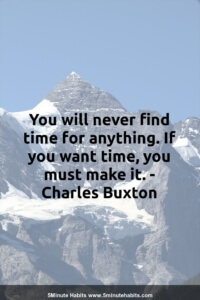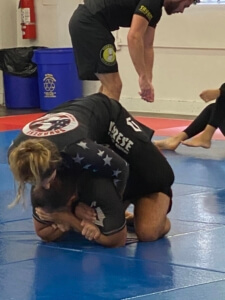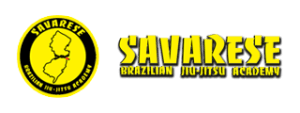BJJ: Are you casual or are you serious?
BJJ: Are you casual or are you serious?


Learning the principles in Brazilian Jiu-Jitsu is the foundation of our art. All the best Academies and Jiu-Jitsu teachers everywhere don’t just teach “moves”, they teach principles of the art. With regards to Jiu-Jitsu technique, fashions come and go. What is popular today can be replaced by tomorrow. But underneath that surface, technique lies something permanent, something deep and unchanging whose weight will give your game gravitas, the bedrock of the art, PRINCIPLES. Focus on those and your game will never go out of style. I was lucky to be trained early in my BJJ journey by Professor David Adiv (www.gracienewjersey.com), he didn’t just teach techniques, he taught the principles of Brazilian/Gracie Jiu-Jitsu. The hows and the whys we do everything in our art. How, where and why to use frames in a great example. In a game where control is everything, using frames to prevent an opponent from establishing controlling grips and position is a huge part of your development. The centerpiece of your frames will always be the link between your knees and elbows. The closer your opponent gets to you, the closer your knees and elbows need to be together. We stress this from the beginning of your journey here at Savarese BJJ Academy (www.njbjj.com).
Fighting legs vs head in BJJ, specifically your legs vs their head, is one of the best forms of control in Brazilian Jiu-Jitsu. here at Savarese BJJ Academy (www.njbjj.com), one of the basic features of Jiu-Jitsu is the notion of controlling greater strength and aggression with lesser strength and aggression via mechanical and tactical advantage. One of the surest ways to do this is to use the strongest parts of the human body (legs and hips) against the weaker parts (head and shoulders for example). Two excellent examples of this would be the triangle and armlock/armbar, both of which directly match your legs against an opponents head and arm. Whenever possible look for this kind of match up in your favor. if you want to defeat biggest and stronger opponents, then you must seek to fight your opponents upper body with your lower body as much as possible. That is the matchup body-wise that will favor you. If you make it a battle of your upper body against a similarly skilled and bigger opponents upper body it is unlikely you will win. So in conclusion, always make it a fight between your lower body and your opponents upper body and victory will definitely find your door more often than not.

Fatigue is the ultimate submission in BJJ. We all have our favorite submission holds, but people who get tired will eventually “break”. The legendary football coach Vince Lombardi had a great quote about this…”Fatigue makes cowards of us all.” In time, I hope you develop at least five to six submissions that you can attack from anywhere on anyone. But never lose sight of a fundamental truth in grappling. The ultimate submission is not a hold per se, it is fatigue. If you can physically and mentally break an opponent with fatigue they will submit with their mind first and then with their second. A big part of your skill set has to be the skill of wearing down and exhausting an opponent so that all the submission holds are easy to apply and which an opponent will gladly surrender to. In the world of Brazilian Jiu-Jitsu, this is also called “cooking an opponent as well. There are ways to control and manipulate grips, stance and pace that are heavily in your favor so that an opponent is working at two or three times the rate you are. If you can maintain this, the result is inevitable. An opponent who is looking for an excuse to quit, your submission hold provides that excuse. When you put hands on an opponent your constant underlying goal should be to create a disparity in work rate skewed in your favor that opens the door to submission later in the match.
Plotting your next move in BJJ in a great habit to get into. There are times in Jiu-Jitsu where you have to move quickly and keep moving. There simply isn’t time to think and you have to trust in the habits you gained through training in the Academy to prevail. Fortunately there are just as many times where you DO have time to stop, think and plot your next move among competing options. Unfortunately, we all have a tendency to ignore the different nature of these two situations and we often just unthinkingly charge ahead to the next move when we actually had plenty of time to think and plot. Here at Savarese BJJ Academy (www.bjjlyndhurst.com) we teach our students to make sure you use time constructively if time is available. That often means the difference between moving for the sake of moving versus moving with a purpose. There are many situations in Jiu-Jitsu where you exert sufficient control where you can take some time to figure out the next move. Here, our student Cait uses the control afforded by a tight back head and arm (seatbelt) grip to plot how she will get hooks in and finish or gain a better position.
Is the back BJJ’s best position? It is a question we ponder at Savarese BJJ Academy (www.bergencountybjj.com). We love the back as well as the mount. But only one position truly merges position and submission, the back. If you look at the pinning pressures of Jiu-Jitsu, you will see that as desirable as they are, you still have quite a bit of work to do to go beyond the pin into the submission. Getting side control or the mounted position or north south or knee on belly is good, but getting the arm or a chokehold from there requires a significant set of skills. The rear mount (aka the back) on the other hand, leaves you VERY close to submission. Unless your opponent has good defensive skills, a simple wrapping of your arm around the neck is enough to end it. You can see how closely the position (rear mount) is to the submission (rear naked choke) by the fact that the escape from one entails the escape from the other. This is not true for say, a mounted arm bar or Kimura from side or knee on belly. Usually escaping the pin is one thing, the submission from that pin is another. As such rear mount/rear naked choke is the single best synthesis of position and submission in the art of BJJ. Mastering the art of getting there, staying there, and finishing from there is the best way to close the gap between position and submission in your game. In this photo, one of our top women, Ariana Zeppetelli, controls the back position before attacking with the aforementioned rear mount/back to rear naked choke combination, one of the deadliest in Jiu-Jitsu. Notice she also has double wrist control in an effort to completely flatten her opponent.

Is the back BJJ’s best position?
The greatest compliments we could ever receive are the kind words you share with others.
